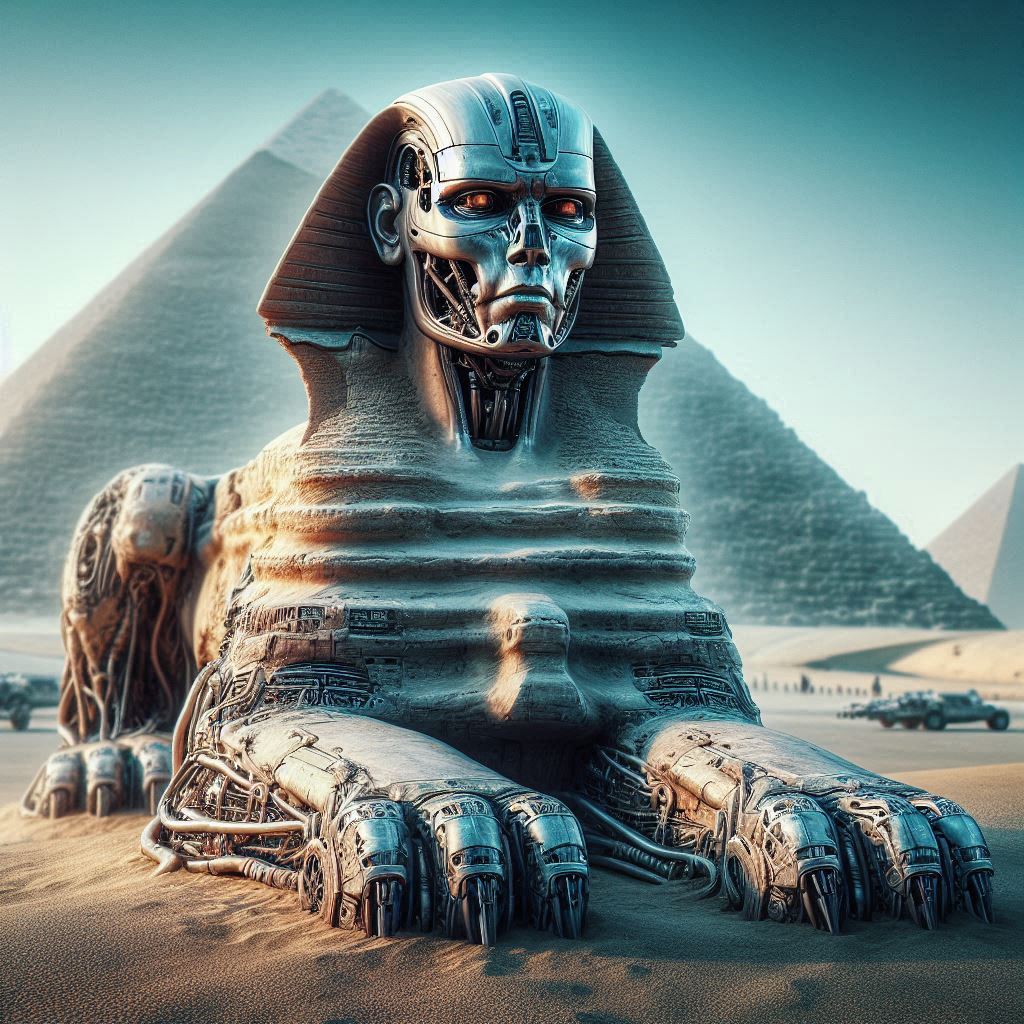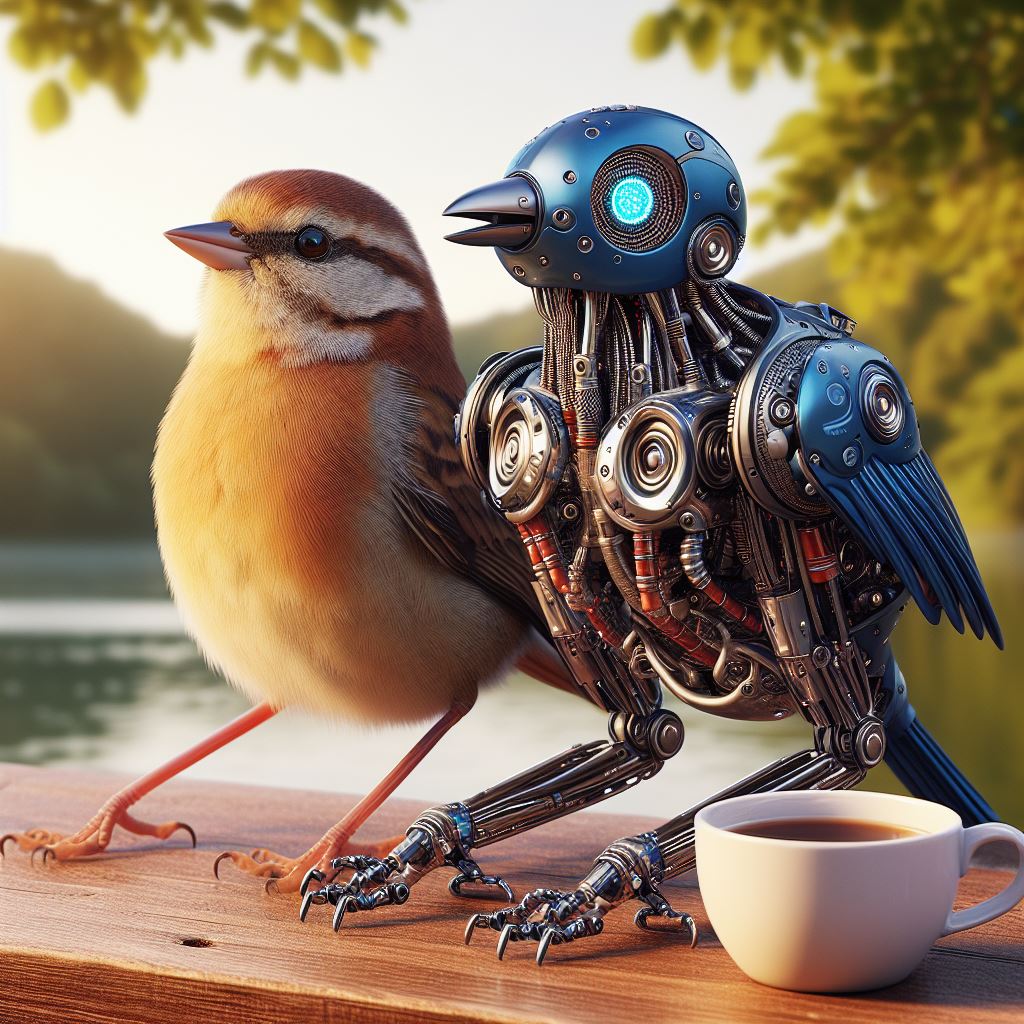(Have you got a theory that you want to share? An encounter that you can’t quite explain? Email us at [email protected], and we’ll help you get the word out, or make sense of the mysteries that remain on this spinning Earth.)
Here at The Reality Register, we only print the truth, and as a result we are sometimes contacted by whistleblowers, independents researchers, and the occasional crackpot who finds Hiram Glassman attractive. I recently received a cryptic message from a mysterious Instagram account that publishes in both English and some strange scribble script that is possibly alien in origin. After a bit of back and forth, I was able to discern that this was no ordinary conspiracy theorist, no Graham Hancock style revisionist historian. His insights into the nature of machines, artificial intelligence, and their connections to ancient symbols like the Sphinx left me both intrigued and alarmed. According to Ali, the Sphinx is not just an enigmatic monument but a prophetic symbol warning us of the dangers posed by intelligent war robots, which he likens to Terminators from the eponymous film franchise.
Ali’s theory begins with a fundamental division: humanity has created two types of machines. The first type is mechanical, such as cars, excavators, trucks, airplanes, and helicopters. These machines rely on physical mechanisms to function. The second type is computational, including calculators, computers, and artificial intelligence. These smart robots are machines that process information and make decisions.
Every smart robot, Ali asserts, is composed of two essential parts: the head and the body. The head represents artificial intelligence, capable of thinking and decision-making. The body represents the mechanical aspects, providing physical capabilities. This combination, according to Ali, is symbolized perfectly by the Sphinx. The head of the Sphinx symbolizes AI, while the lion’s body represents a mechanical war machine.
Ali suggests that the creation of intelligent war robots is the ultimate result of merging AI with mechanical power. Thus, the Sphinx, with its human head and lion body, stands as an ancient symbol of these future intelligent war machines. This theory raises the possibility that the Sphinx, far from being a mere statue, could be seen as an early representation of a war robot.


It’s uncertain who exactly built the Sphinx. Various theories exist, but most scholars agree that the ancient Egyptians themselves constructed it. Ali proposes that the Sphinx may have served as a symbolic warning, much like modern logos and mascots used for advertising. Alternatively, he posits that the Sphinx could indeed have been a war robot, albeit made from materials available at the time—clay, which contains elements like germanium and silicon, essential for modern electronics. Our mysterious informant from Asia Minor was adamant that not all robots need be built from steel and copper.
Ali also points to the Tarot’s Chariot card as evidence of ancient understanding of autonomous machines. The card depicts a chariot pulled by two sphinxes with human heads, suggesting they have the ability to think and decide, much like modern AI-driven drones or self-driving cars. If we remove the charioteer from the equation, the sphinxes symbolize autonomous decision-making and combat capabilities, akin to contemporary smart battle tanks and unmanned combat aircraft.
The Sphinx’s nose, Ali continues, symbolizes an electric switch. Ancient Egyptians breaking the nose of the Sphinx was not an act of vandalism by Napoleon’s soldiers, as commonly believed. Instead, it was a deliberate action by the Egyptians themselves, symbolizing the disabling of a powerful machine. This act served as a message to future generations about the importance of having control mechanisms—akin to a modern standby switch on electronic devices—that can deactivate potentially dangerous technologies.
In the Tarot’s Wheel of Fortune card, the Sphinx is positioned atop the wheel, surrounded by various animals that symbolize different types of intelligent war robots: Adam (land robots like tanks), the snake (chemical warfare robots), the cow (naval robots), the eagle (aerial robots), and the lion (robots capable of mass destruction). This imagery suggests a future where robots could dominate land, sea, and air, making no place on Earth safe for humans, when there are ancient killer robots capable of operating on all terrain.
Ali’s warnings culminate in a chilling prediction: by 2024, humanity may witness the creation of the first terminator robots. With the rise of military drones operated by AI assisted software, and flamethrowing robot dogs already out on the market, it’s easy to see that our informant’s warnings are firmly rooted in reality.
As I delved into Ali’s insights, I couldn’t help but ponder the implications. Are we truly in the process of creating machines that will turn against us? The Sphinx, an ancient monument shrouded in mystery, might just be the harbinger of a future where intelligent war robots roam the Earth. Whether this future becomes a reality or remains a cautionary tale depends on how we navigate the path of technological advancement.
Here at The Reality Register, we are staunchly opposed to Artificial Intelligence, and we are skeptical that human intelligence even exists. As we ooze into the future, we must be aware of the dangers posed by the increasingly powerful complex technology that is being developed by amoral dweebs in unlivable cities, and we must look to the whistleblowers like Ali if we are to make it through this terrifying epoch in human history.
You can find Ali’s work on Instagram at @alimasoudi and @portcanct60.
Stan Dirkson




